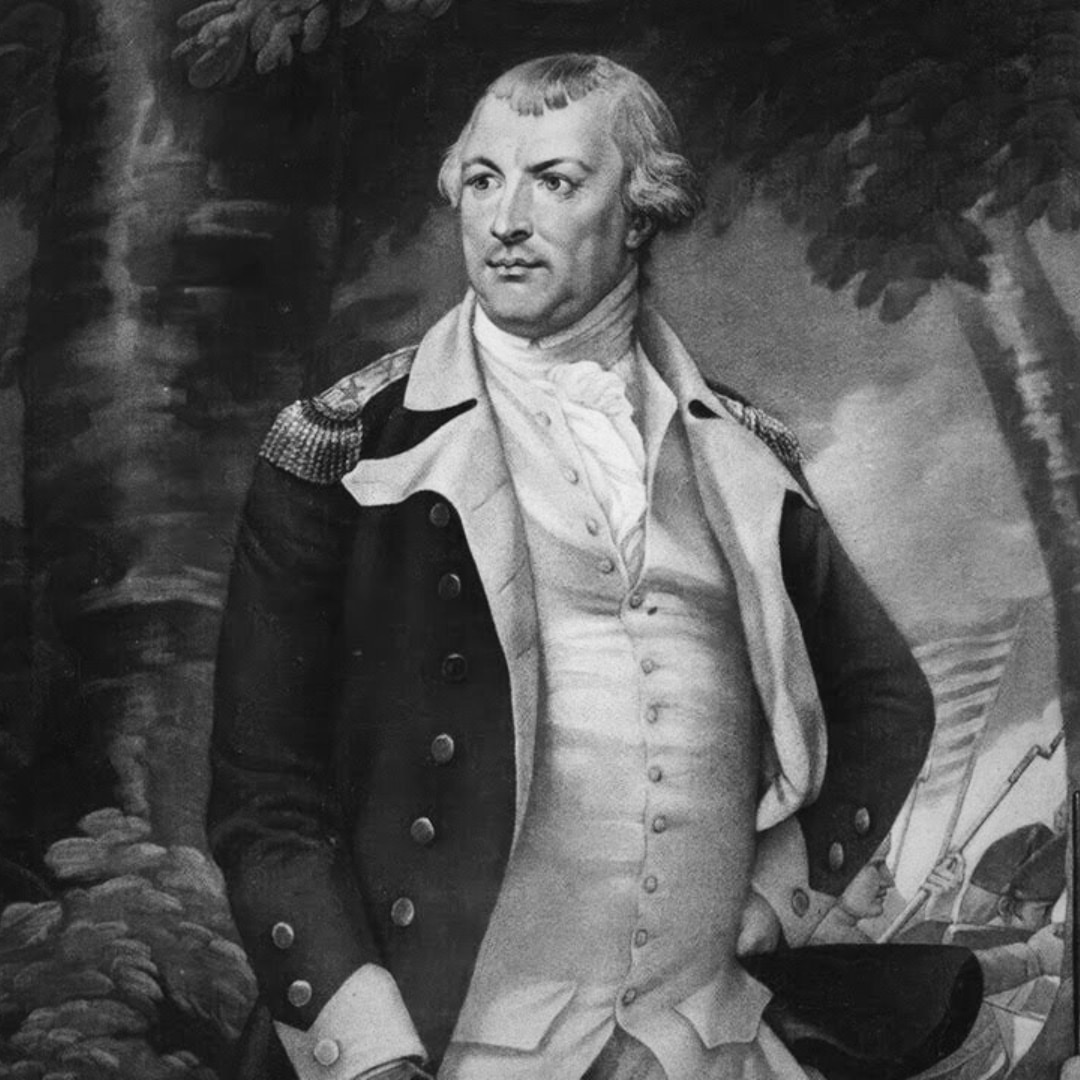
Few American Revolutionary military figures are as simultaneously pivotal and under-appreciated as Nathanael Greene. His strategic acumen profoundly shaped the outcome of the conflict.
Born into a Quaker family in Rhode Island, Greene's evolution from a self-taught militia private to a trusted general in George Washington's Continental Army is a testament to his intellect and tenacity.
His role in the Southern Campaign, particularly his masterful series of retreats and counterattacks, weakened the British forces to the point of collapse and significantly shifted the tide of war.
As we consider Greene's strategic highlights and the legacy he left behind, one must wonder how such calculated brilliance emerged from humble beginnings and how his military endeavors continue to influence modern military doctrine.
The story of Nathanael Greene is not merely a chapter in the Revolutionary War; it is a narrative of ingenuity and perseverance that invites further exploration into the depths of his tactical prowess.
Nathanael Greene, born on August 7, 1742, in Potowomut in the Rhode Island Colony, was the son of a prosperous Quaker family and received a modest education that laid the foundation for his future military strategy. Despite the constraints of his upbringing within the pacifist Society of Friends, Greene developed an early interest in military affairs. A balance of work at his father's iron foundry and attendance at Quaker meetings during his formative years imparted values that later influenced his leadership style.
In Rhode Island, Greene's early life featured a voracious appetite for knowledge, including studies in law and mathematics. This self-directed education, unconventional for its time, equipped him with essential skills that would prove invaluable in his military career. In the years leading to the American Revolution, Greene helped organize a local militia unit, demonstrating his commitment to the Continental cause.
Despite the apparent contradiction of his Quaker upbringing with military endeavors, Greene's transition from a modestly educated youth to a key figure in the American Revolution blended intellectual curiosity with a strong sense of civic duty, defining his contributions to the emerging nation.
Amidst the fog of war, General Nathanael Greene's tactical acumen shone brightly, steering the Continental Army to pivotal victories and sowing the seeds of British defeat. George Washington entrusted Greene with a critical role during the Revolutionary War, where he initially served as Quartermaster General, ensuring troops were adequately supplied, before demonstrating his strategic prowess as a field commander.
Greene's appointment by the Continental Congress as the commander of the southern army came at a time when American fortunes appeared bleak. His leadership was instrumental in the transformation of the war's trajectory. At the Battle of Trenton and the Siege of Boston, Greene's forces secured morale-boosting victories that were vital to the Patriot cause. His ability to divide and maneuver his troops at the Battle of Princeton showcased his mastery over military strategy.
The Battle of Guilford Courthouse, although technically a defeat, exemplified Greene's strategic foresight. His army inflicted such heavy casualties on the British that it forced them to withdraw, ultimately leading to their surrender. Greene's bold decision at Cowpens to divide his forces turned the tide of the war, demonstrating that even in the face of adversity, his strategic choices were pivotal in attaining a revolutionary victory for the nascent United States.
General Nathanael Greene's strategic genius during the Revolutionary War has left an enduring legacy, celebrated in monuments and studied in military history courses across the nation. As a trusted Brigadier General in the Continental Army, Greene's pivotal role at battles such as Eutaw Springs solidified his reputation as a master strategist. His close collaboration with General Washington contributed significantly to the Triumph of the American cause.
Statues and memorials bearing his likeness stand in places of prominence, serving as a testament to his impact on American history. Moreover, his strategic methods are analyzed for their innovation and effectiveness, influencing generations of military leaders.
The legacy of Nathanael Greene extends beyond the battlegrounds. His name graces counties, towns, and parks, ensuring that his memory remains woven into the fabric of the nation he helped to forge. As a strategist, he exemplified adaptability and foresight, qualities that remain essential in military leadership. Thus, the commemoration of Nathanael Greene not only honors his past achievements but also inspires future leaders to aspire to the same level of dedication and ingenuity.
During the Revolutionary War, Nathanael Greene exhibited exemplary military leadership, devising Greene's Strategy which combined fortification improvement, guerrilla tactics, and logistic innovations, crucial to the success of the Southern Campaign, despite his Quaker background.
Nathanael Greene employed guerrilla warfare, strategic retreats, and diversion tactics, causing supply disruptions. Utilizing hit-and-run attacks, intelligence gathering, and terrain advantages, he avoided encirclement and adopted an indirect approach, ultimately exhausting the British army.
Nathanael Greene's contributions at Valley Forge included logistical reformation, efficient supply procurement, and strategic planning, which bolstered soldier training, morale, fortification improvements, and health initiatives, enhancing military administration during the critical winter encampment.
Nathanael Greene's Quaker background and peaceful upbringing suggest a pacifist inclination, yet his military transition and combat engagements reveal an ideological shift, challenging the pacifism debate and reflecting a complex moral dilemma.
Nathanael Greene's strategic acumen and unwavering commitment to the American Revolutionary cause have cemented his status as a military mastermind.
His leadership during the Southern Campaign significantly debilitated British forces, contributing to the eventual victory at Yorktown.
Historical narratives and commemorations celebrate Greene's enduring legacy as a tactical genius, affirming his pivotal role in securing American independence and shaping the nation's military doctrine.
His impact on the Revolutionary War remains a testament to innovative military strategy.